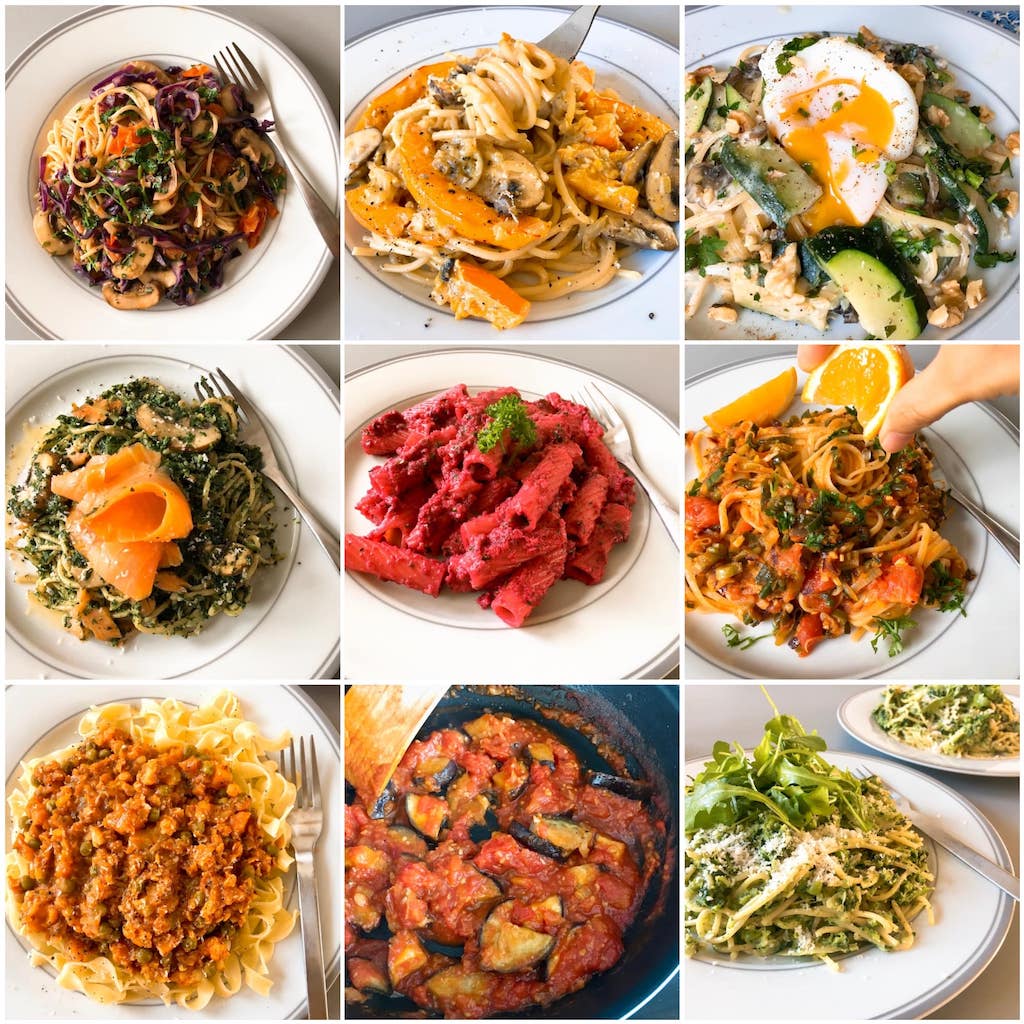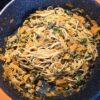Nowadays, there are unlimited pasta recipes on the internet. But do you notice many of those using a lot of cheese, cream and fat, whilst using fewer vegetables? Yes, the pictures look great and people like and share them. More traffic, more attention.
But I don’t want to sacrifice my health.
So, here’s my cooking motto:
More vegetables, more fibre, more nutrients, which make our bodies happier.
That’s why you’ll find most of my cooking is like veggie mountains, and the pasta mostly covered by vegetables.
Enough story now. Let’s starts with some Q&A.
Q2. Is Whole Wheat Pasta Full of Fibre?
Q3. How to Weigh Pasta Without Scales?
Q4. Why Do We Add Salt to Pasta Water?
Q5. What Percentage of Salt is in Pasta Water?
Q6. What is the Difference Between Long and Short Pasta?
#1 Very Rich Tuna Tomato Pasta
#2 Basic Tomato Sauce Spaghetti with Aubergine
#4 Easy Salmon Pasta in Tomato Cream Sauce
#5 You Can’t Go Wrong Tomato Sauce
#6 A Humble Chickpea Pasta (Pasta e Ceci)
#7 3-Min Poached Egg on Creamy Pasta
#8 Lemony Brussels Sprouts Creamy Spaghetti
#9 Creamy Soy Milk with Pumpkin Spaghetti
#10 Spinach Mushroom Tortiglioni with Sour Cream Sauce
#11 Smoked Salmon Spinach Spaghetti with Cashew Cream
#13 Salmon and Tomato Peperoncino
#15 Tuna and Brussel Sprouts Peperoncino
#18 Tuna Linguine with Shrimp Paste
#20 Mushroom Stroganoff Spaghetti
Q1. Why Pasta?
There are 2 main reasons.
1) Pasta dishes are versatile.
If you have some tomatoes, go for a tomato sauce. Want something rich and fatty? Then go for white sauce. Have a lot of fresh herbs? Pesto is good. Want a spicy kick? Peperonccino would be the best fit.
2) Pasta is protein-rich.
Pasta is made of wheat and it is a source of protein. Compared to rice vermicelli, which has 7-8 g of protein per 100 g, pasta has 12-13 g.
Q2. Is Whole Wheat Pasta Full of Fibre?
If you choose whole wheat pasta solely because of high fibre, make sure to check the nutritional label before buying. From what I’ve seen in the supermarket, it’s about a 3 g fibre difference per 100 g than the regular one. But always remember, vegetables and whole grains are the best source of fibre, not processed pasta.
Q3. How to Weigh Pasta Without Scales?
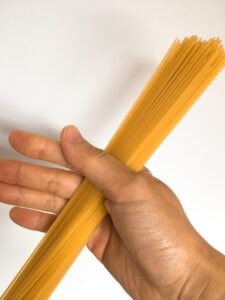
I usually weigh pasta with a scale. If you don’t have one, you can use your hand!
Hold the pasta with the thumb and forefinger, the pasta should reach your thumb’s middle. That’s about 80 g of pasta, for one person.
Q4. Why Do We Add Salt to Pasta Water?
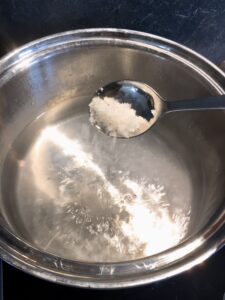
You may guess, ‘To accelerate the cooking process, because salt can increase the boiling point.’ Salt indeed can increase the boiling point. However, with that much amount of salt to boil water, it’s just a matter of 0.1 sec? I bet you are not in a hurry, right?
So, adding salt to pasta is simply because it offers a better taste! It happened to me a few times, I totally forgot to put salt into the pasta water! Even though I added salt after, the pasta was still bland.
Q5. What Percentage of Salt is in Pasta Water?
It’s simple, remember the rule of thumb: 1% salt.
Maybe you’d think, ‘what? Every time I have to measure how much salt to put?’ No, not really. Why?
For example, I know my kettle’s max volume is 1.5L of water, and I need that much to cook pasta for 2 people. Then 1% salt would be 15g salt, which is 1 tbsp (FYI: 1 tsp is 5g). After you’ve gotten used to it, you don’t have to take out the scale and measure it precisely every time.
Q6. What is the Difference Between Long and Short Pasta?
Before I cook, I like to think, ‘am I going to cook spaghetti, penne or macaroni?’ If I use spaghetti, a long pasta, I will slice the onion, or shred the vegetables; if it’s short pasta like farfalle or macaroni, I’ll dice the veggies to get everything on a spoon in every bite.
Now, let’s dive deeper into the recipes.
Red Sauce Pasta Recipes
I often use tinned tomato or tomato passata for the red sauce pasta.
What is Tomato Passata?
Tomato passata is a fine and concentrated tomato sauce made from cooked tomatoes, but removes all the skins, seeds and excessive water, then is pressed to make it into a fine texture.
Some Italian grannies make tomato passata like this:
The texture of the tomato passata is in-between tinned tomato and tomato paste. It’s a great product for making tomato sauce because of its rich flavour.
Here are some of my favourite red sauce pasta recipes.
#1 Very Rich Tuna Tomato Pasta
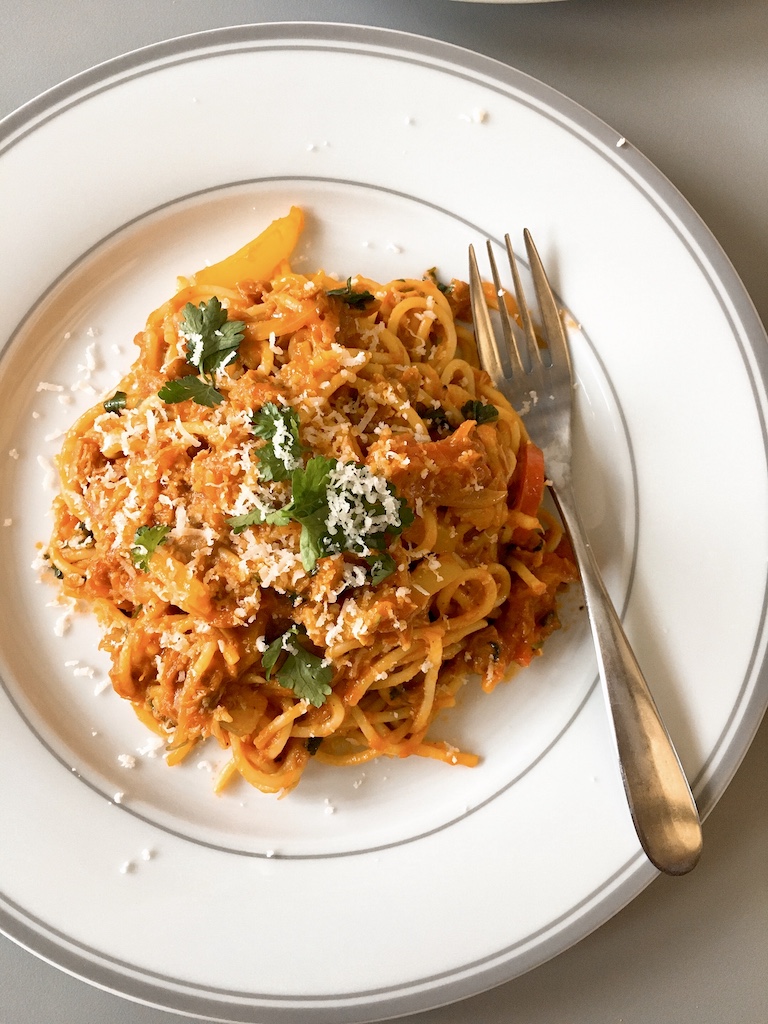
Using tinned tuna with tomato passata and ketchup, the sauce is rich and dense. It can be made in 30 mins.
#2 Basic Tomato Sauce Spaghetti with Aubergine

The semi-pan-fried aubergine was super tender, then married to a concentrated tomato sauce. What a heaven.
#3 Lentils Bolognese

Use lots of veggies with lentils to make a vegetarian version of bolognese. I promise, no weird meat taste.
#4 Easy Salmon Pasta in Tomato Cream Sauce

One of my favourite combinations – salmon + tomato, in a harmonious sauce. It’s quite rich in flavour but not too heavy.
#5 You Can’t Go Wrong Tomato Sauce
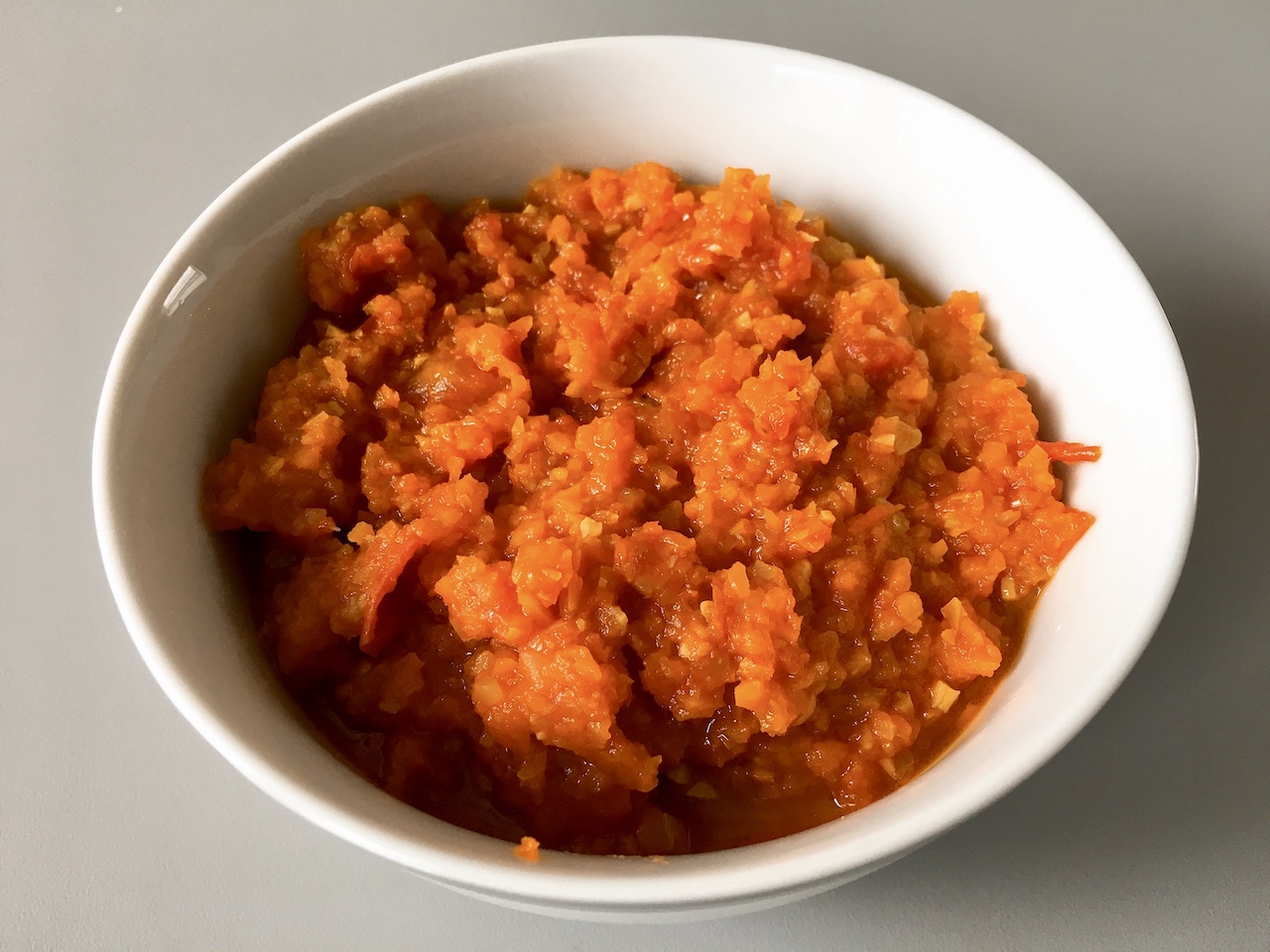
This plant-based pasta sauce recipe is adapted by a Japanese chef. Even though you’re going to make a meat-free pasta, the starred fragrant vegetables will surprise you.
White Sauce Pasta
White sauce, or cream sauce, can be made with different ingredients.
Alfredo vs Béchamel
Alfredo, an Italian sauce mainly made of heavy cream, butter and cheese.
Béchamel, traditionally refers to a French white sauce, is made of flour, milk and butter.
Although some people use béchamel for pasta, I tend to use Alfredo more often, but with a twist – using cashew butter.
Substitute Heavy Cream with Cashew Butter
Cashew butter (or called cashew cream) is a great product to replace heavy cream if you are vegan or simply want to avoid animal products. Use it in the same way, or even add a little soy sauce! It won’t taste like a very nutty flavour, yet very silky and rich.
Let me introduce some of my favourite white sauce pasta.
#6 A Humble Chickpea Pasta (Pasta e Ceci)

Chickpea pasta is one combination that I’d hardly imagined. Do they match? Yes, they do! Although I’ve never seen it in any Italian restaurant, I found myself having cooked it several times and still want to cook more, yum!
#7 3-Min Poached Egg on Creamy Pasta

The poached egg just needs 3 mins! Add it to the white sauce pasta, not only enhance the sauce’s flavour, but also boost your protein intake!
#8 Lemony Brussels Sprouts Creamy Spaghetti
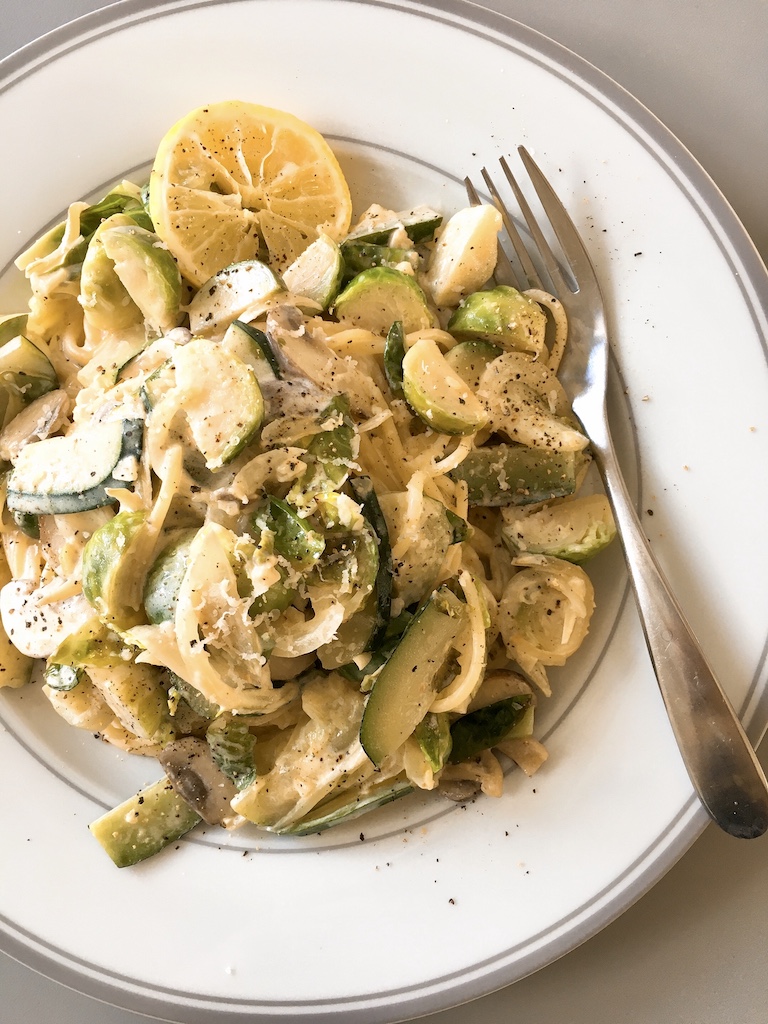
I LOVE the sprouts in this cream sauce. What a good match! Remember to squeeze in some fresh lemon juice as it can lighten up the whole dish.
#9 Creamy Soy Milk with Pumpkin Spaghetti
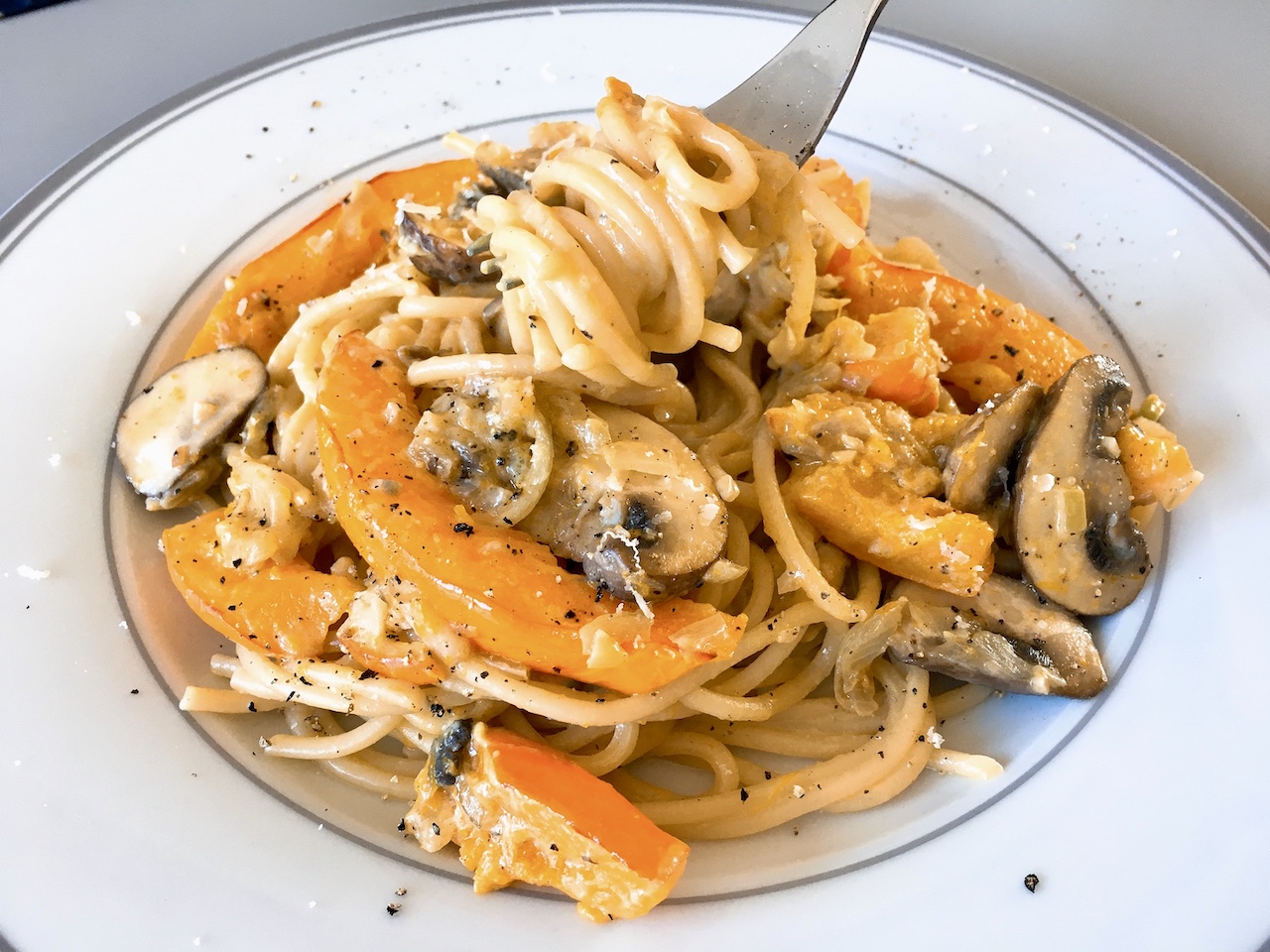
Have you ever tried using soya milk in pasta? It’s a healthier twist of heavy cream and it’s popular in Asian countries like Japan.
#10 Spinach Mushroom Tortiglioni with Sour Cream Sauce
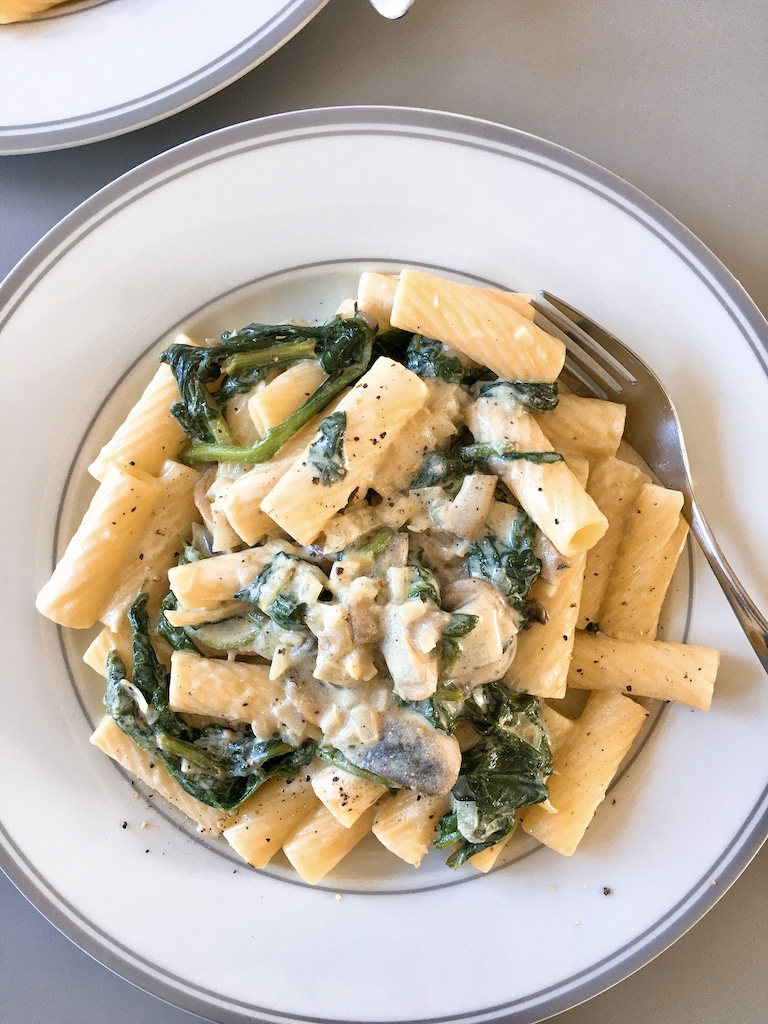
If you fancy a cream sauce but hesitate about the fat, try sour cream! Add some milk, flour and butter to achieve the perfect consistency you like.
Green Sauce Pasta
Traditionally, green sauce refers to pesto. But my green sauce has a broader meaning – anything green can be a green sauce!Haha!
#11 Smoked Salmon Spinach Spaghetti with Cashew Cream
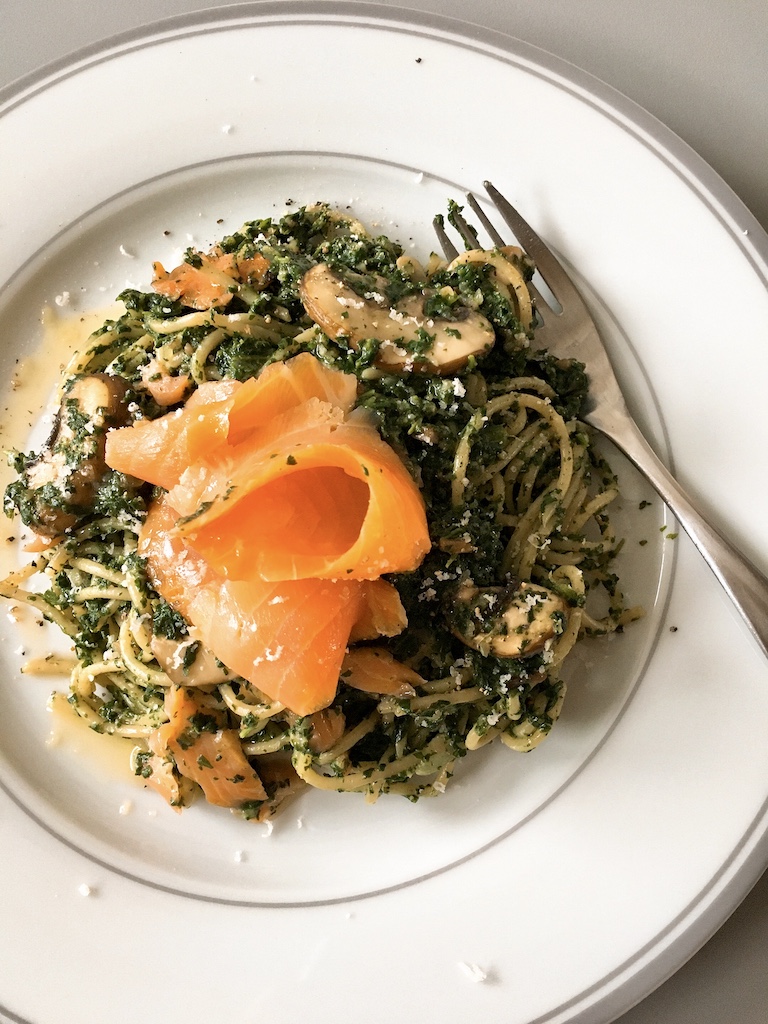
It looks like a pasta served in a restaurant, doesn’t it? (No, restaurant won’t give you so much ingredients). The key is, you need a special homemade sauce.
#12 Triple Green Spaghetti
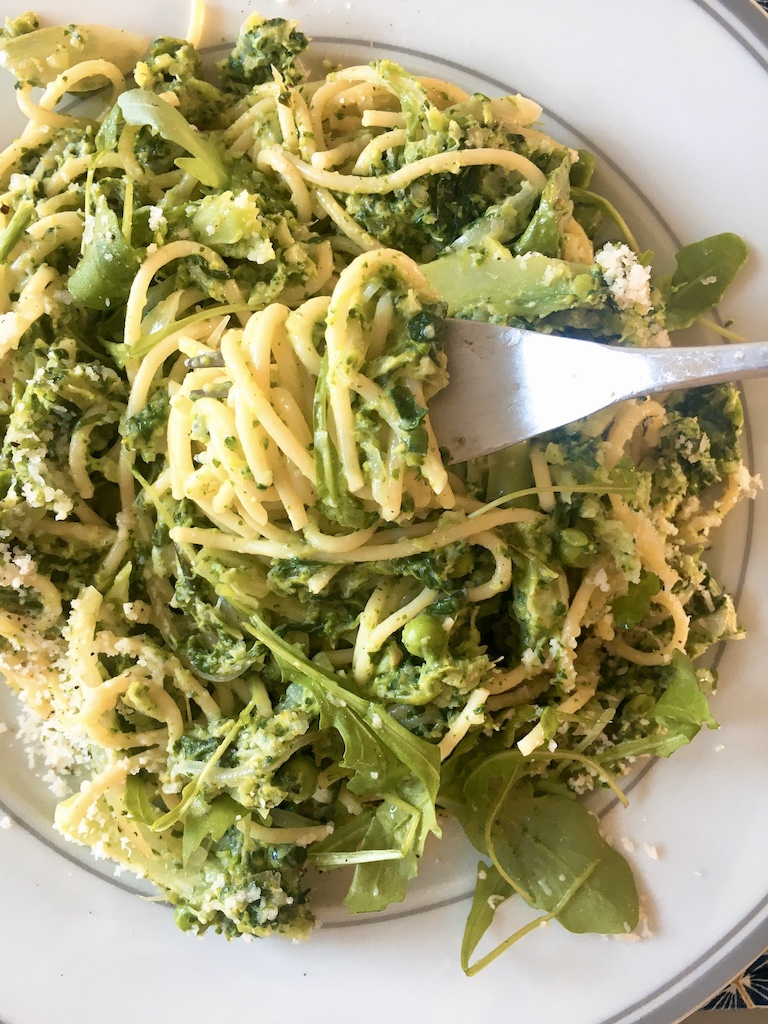
Don’t feel bad about using frozen vegetables, they are a big helper in the kitchen. No need to prep, just throw them to cook and blend them all together, that’s it!
Oil-based Pasta
Fried golden garlic, olive oil, give a splash of pasta cooking water, mix well, then you’ll have a beautiful garlic infused oil-based sauce (principally). I like to add chilli as well, not too much, but it offers a little punch and more appetising.
#13 Salmon and Tomato Peperoncino
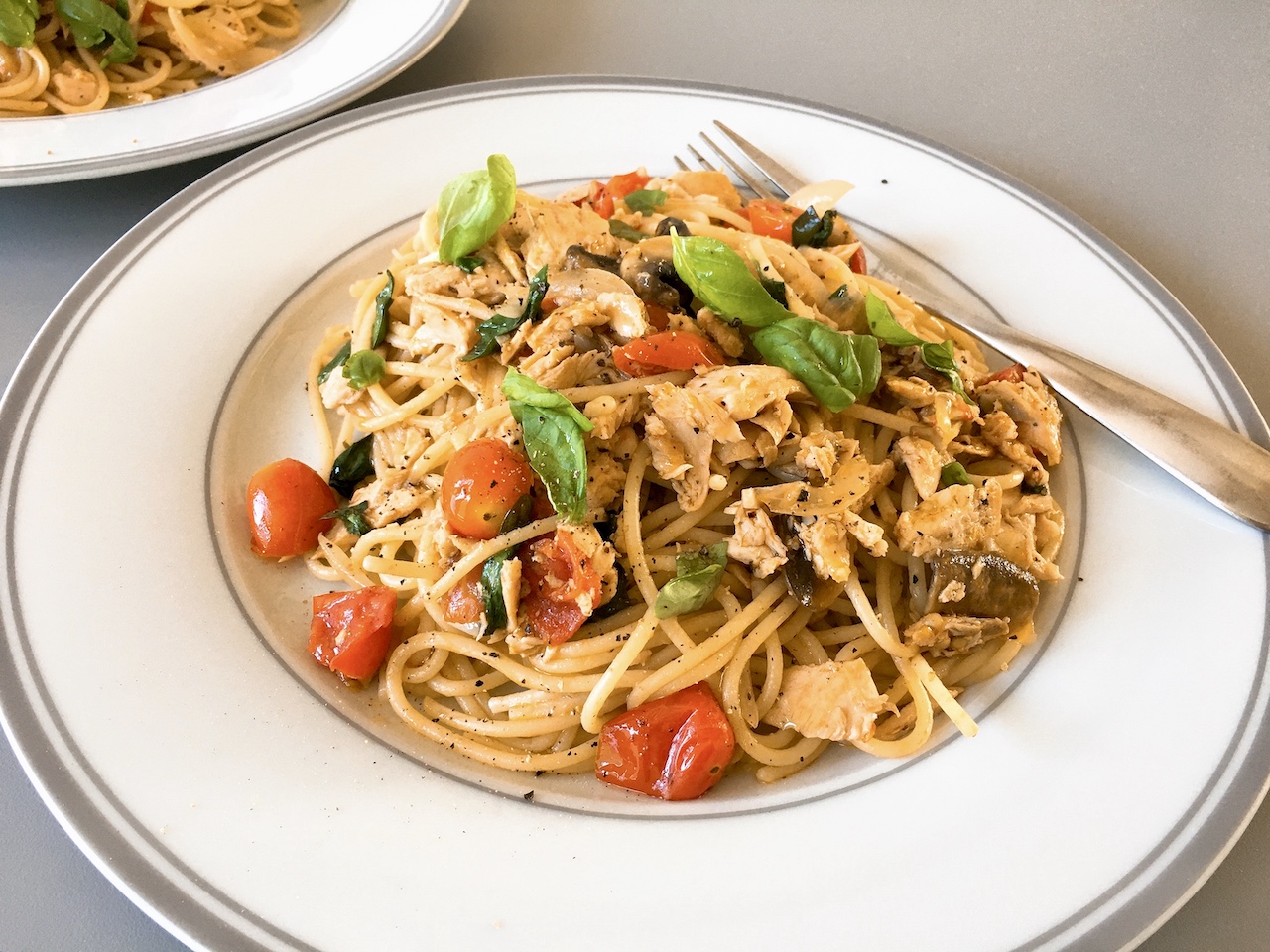
It has the seafood umami, freshness from the tomatoes and herbs, a kick from golden garlic and black pepper. Who can resist it?
#14 Red Cabbage Peperoncino
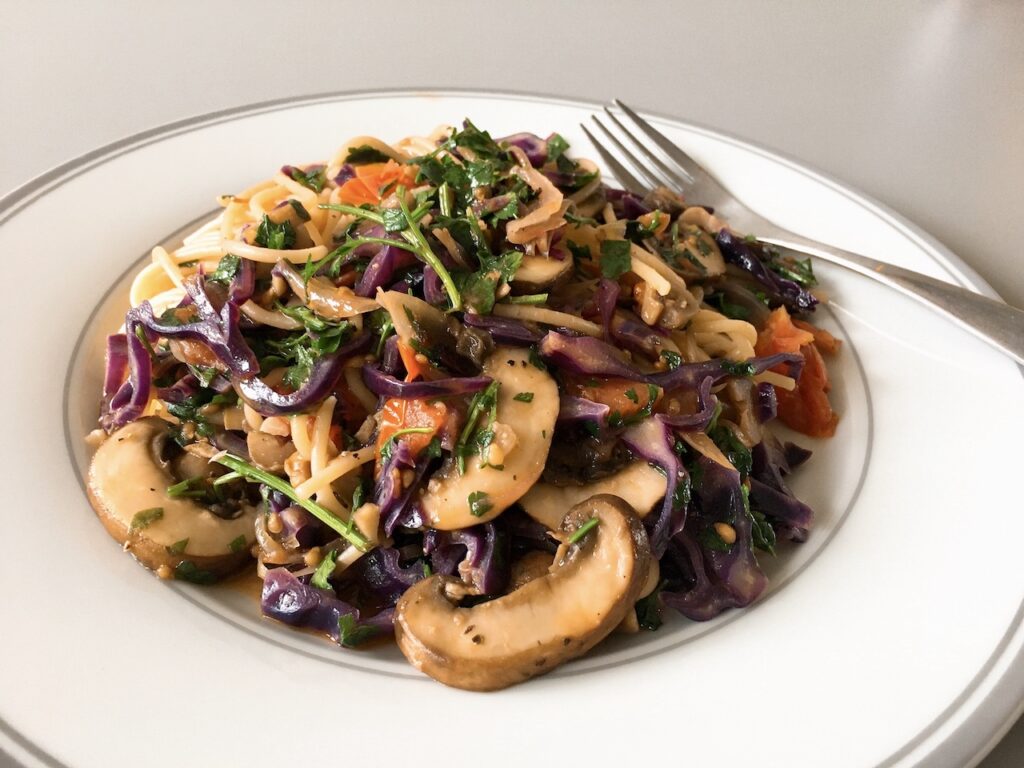
This is how I quickly consume red cabbage. Shred and stir fry, like a chow mein, with pasta also works well.
#15 Tuna and Brussel Sprouts Peperoncino
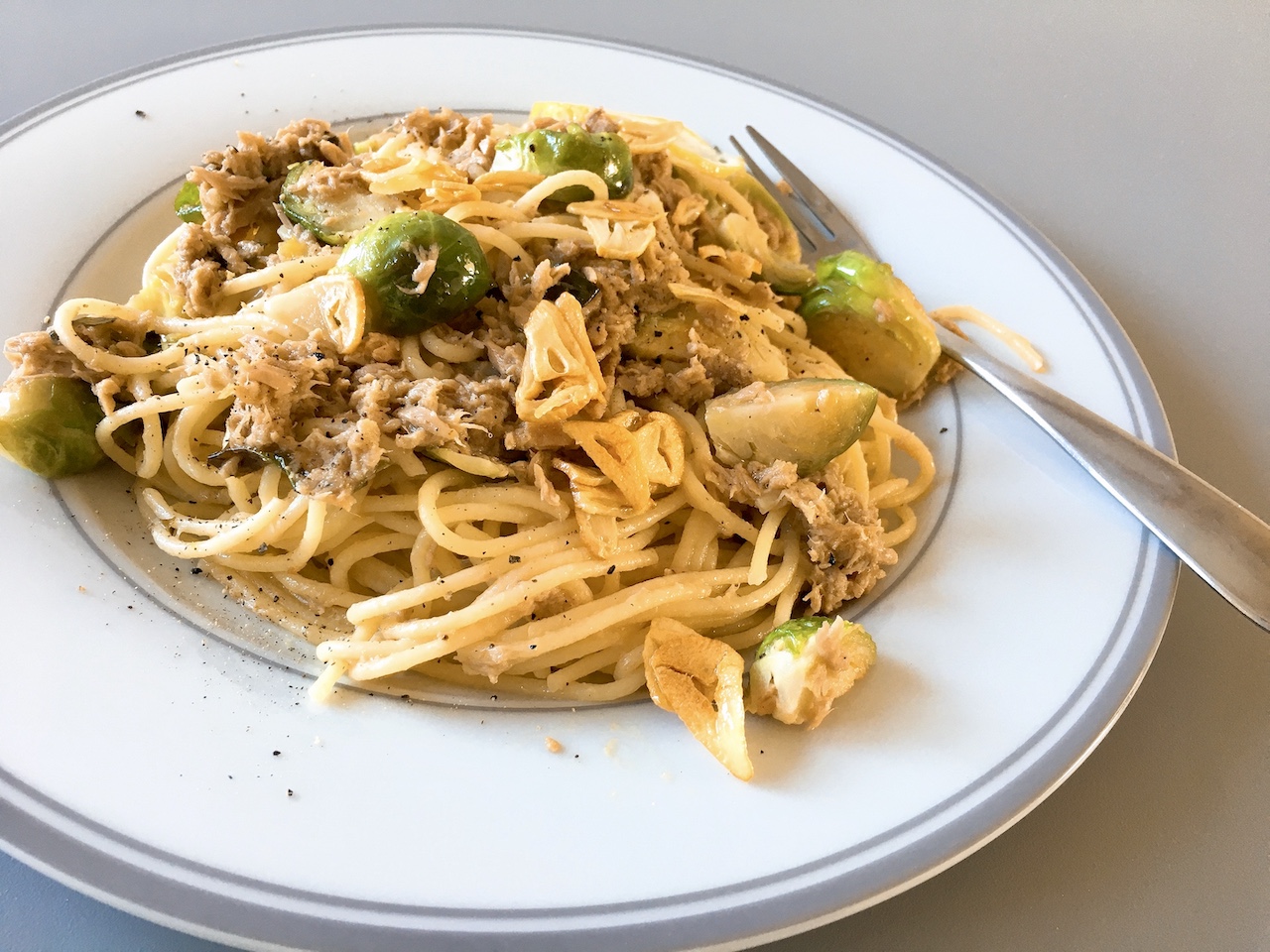
Add more garlic, add more oil, together with the oil in a tinned tuna! Oh MY! The pasta needed that, and you won’t regret about what you’ve done.
My Experimental and Colourful Veggie Sauce Pasta
Besides all the above typical pasta sauces, I also like to try out new ways to cook.
#16 Avocado Cream Sauce Penne
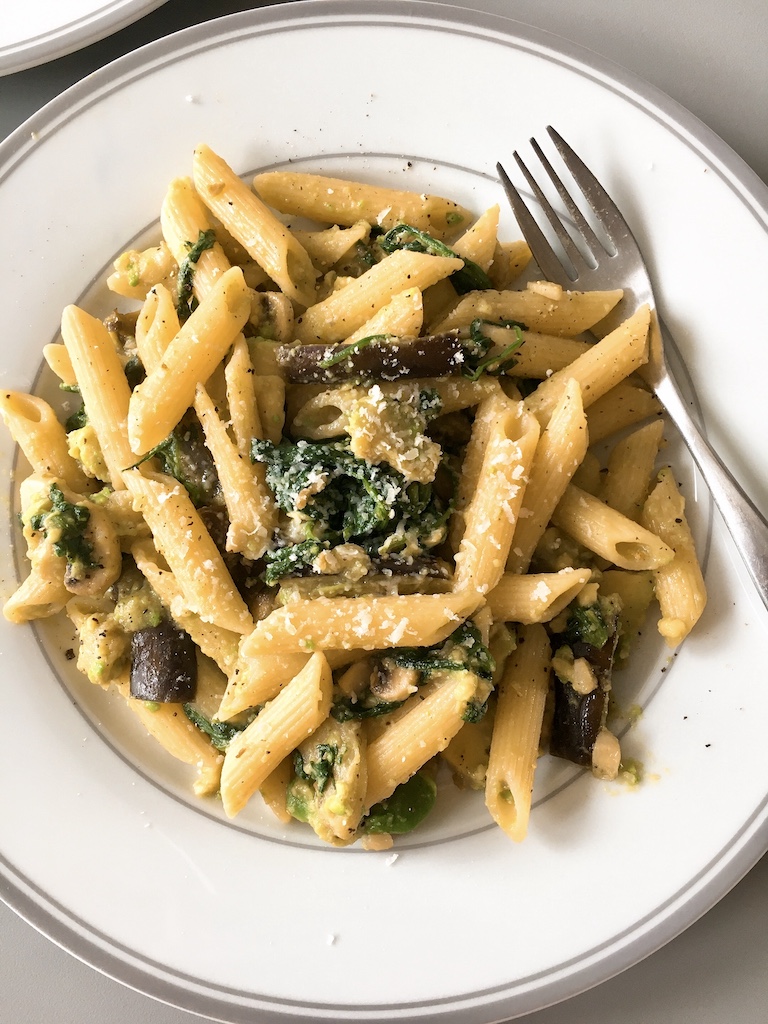
Use a very ripe avocado, add some salt and lemon juice, mix well, and it becomes a creamy avocado sauce.
#17 Orange Salsa Linguine
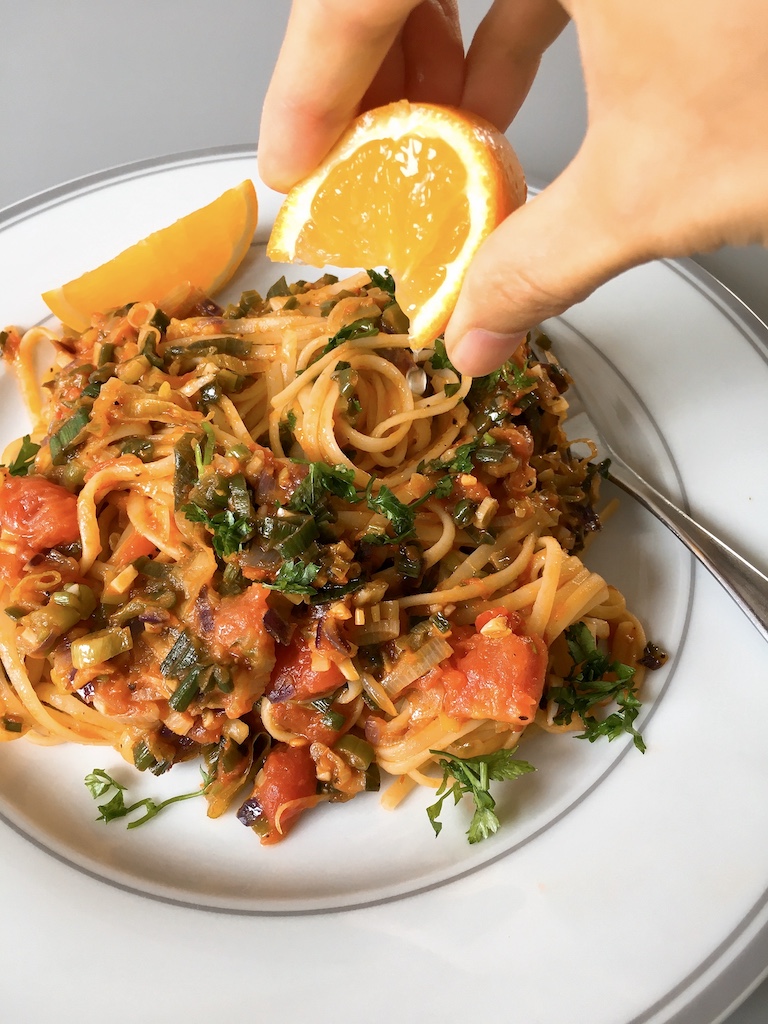
Scallion + tomato + chilli + orange juice = super refreshing salsa pasta sauce. This pasta can be done in 15 mins. Wouldn’t you like to try it?
#18 Tuna Linguine with Shrimp Paste
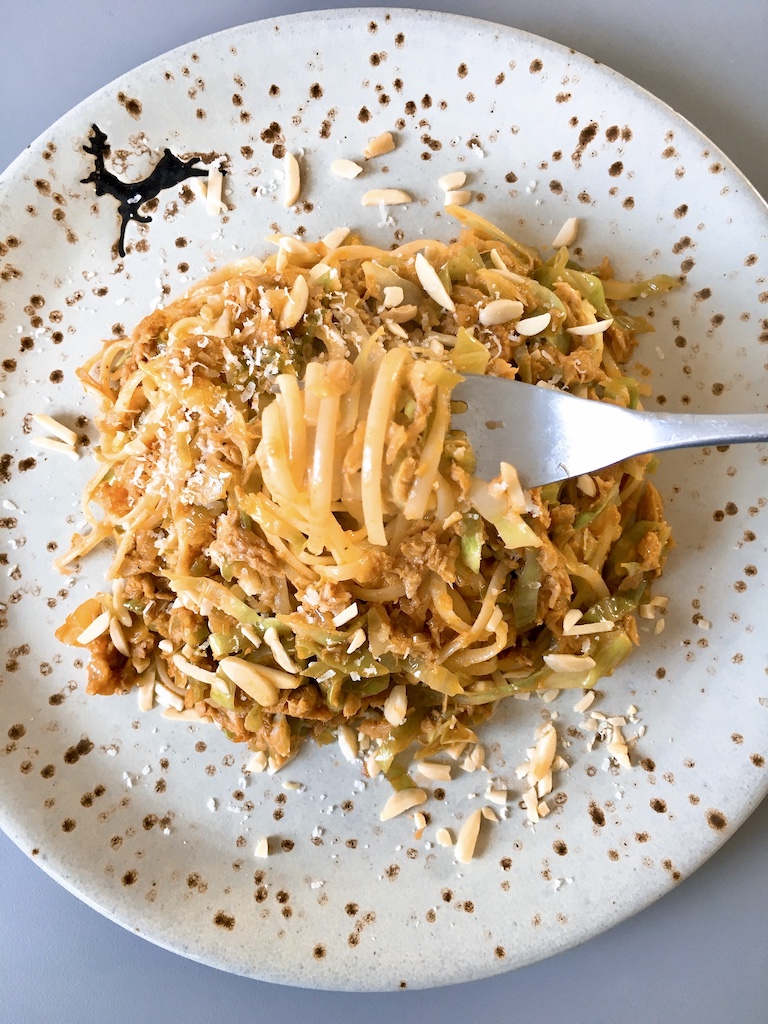
Many pasta recipes call for anchovy, but I don’t have one, I only have shrimp paste, which is popular in Thai or other Asian foods. Anchovy and shrimp paste are both fermented seafood, so, why not?
#19 Creamy Beet Tortiglioni

See! How beautiful is the colour! You just need to blend the beetroot with some basic ingredients. Easy-peasy, no fuss, a delicious beetroot pasta.
#20 Mushroom Stroganoff Spaghetti
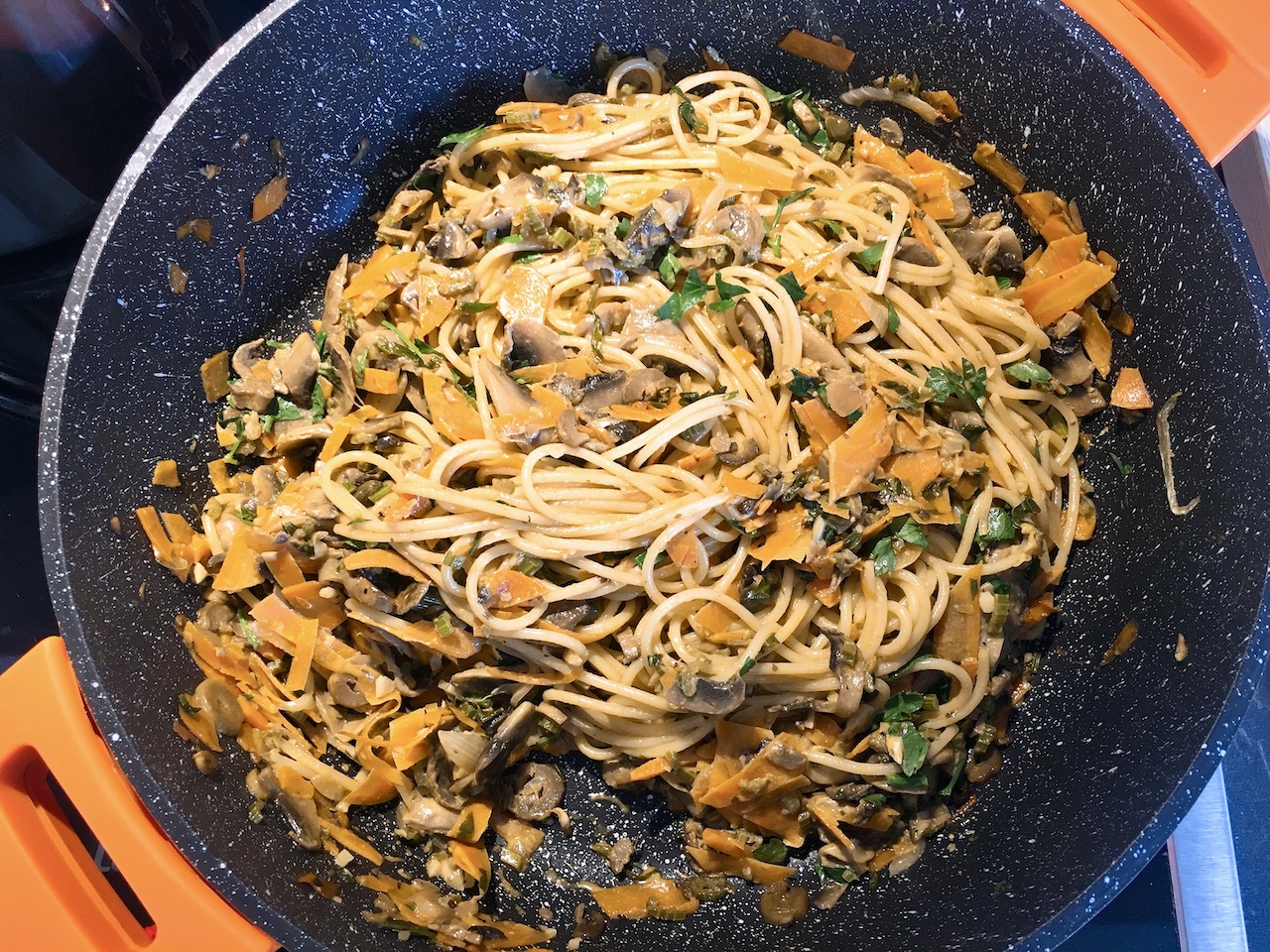
Use capers, Worcester sauce, crème fraîche and lemon juice to act like sour cream in a Russian Stroganoff sauce. Never try it? It offers such a complex flavour! Yummy!
Wow! Thank you for reading till the end! I mean it, I really do.
I hope this blog post can inspire you to cook some more budget-friendly, nutrient-packed pasta. Cooking pasta is not a difficult task , but it can help you easily eat more vegetables. Even without meat, you won’t feel something is missing.
If there is any pasta recipe you’d like to try out, or you have any pasta related ideas, do comment below to let me know.
Ciao!
Wing
